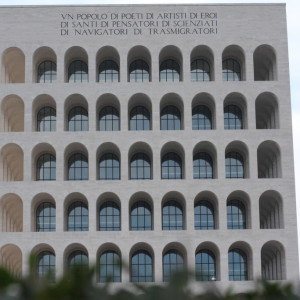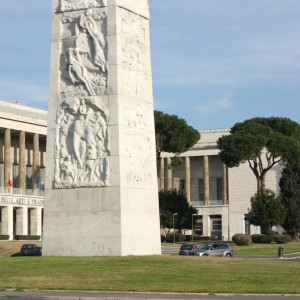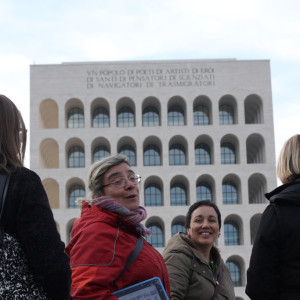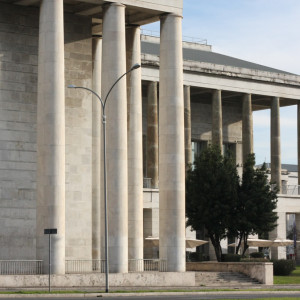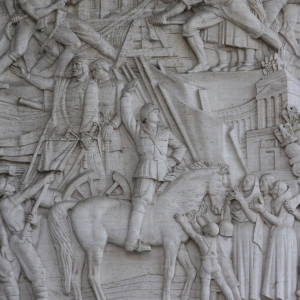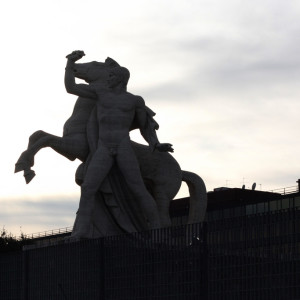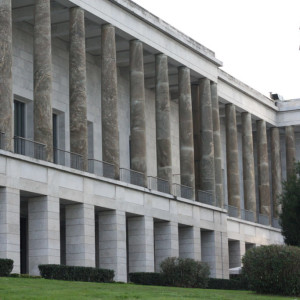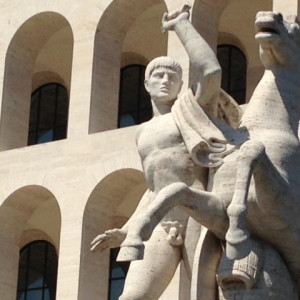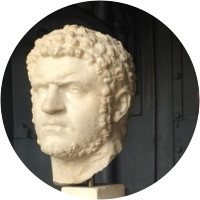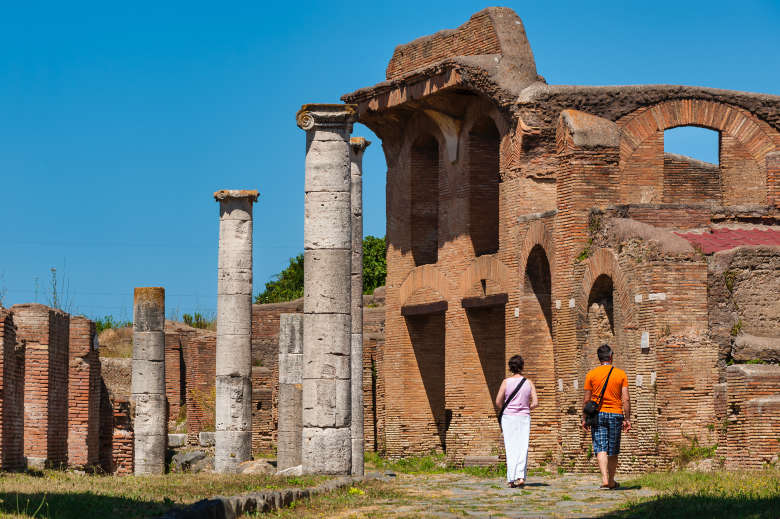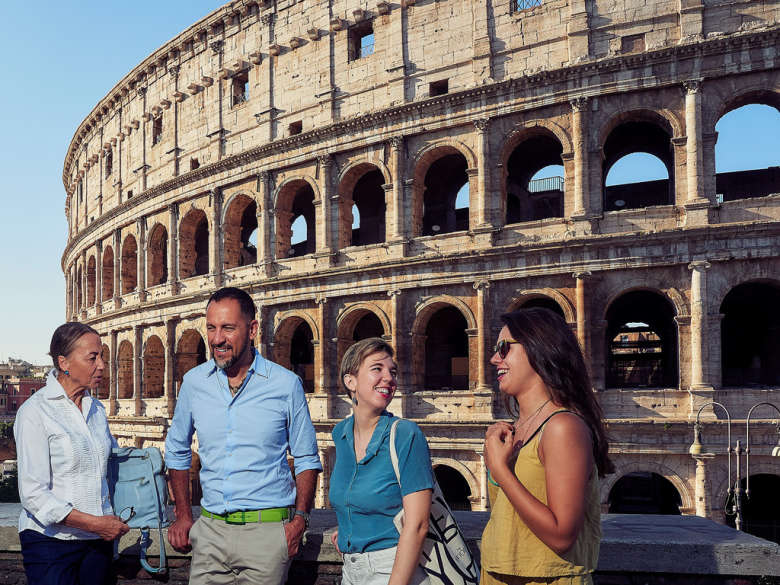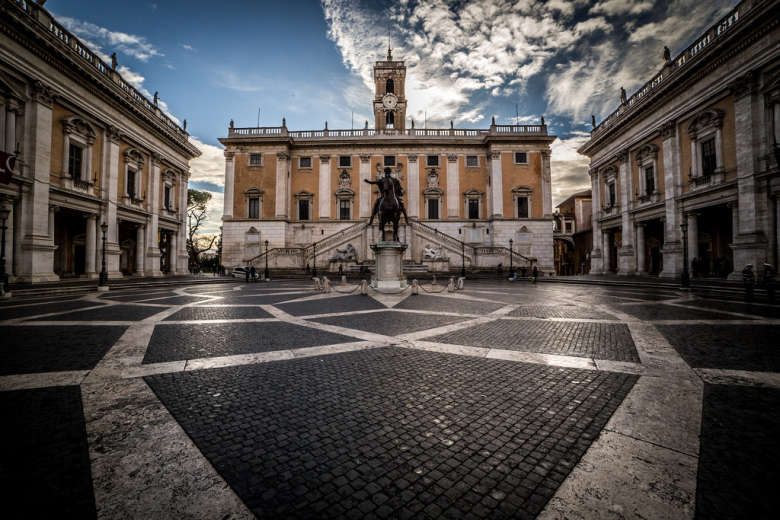Tour Details
- Duration
- 3 hours
- Product Type
- Tour
- Venues
-
- EUR Neighborhood
- Testaccio Neighborhood
Select a date
Tour Description
At the height of his power in 1936, the Italian dictator Benito Mussolini began planning an international fair that would showcase the accomplishments of Italian Fascism to the world and celebrate the twenty year anniversary of its march on Rome. The ambitious project continued despite the outbreak of World War II; however, in 1942, after three years of conflict, the project was abandoned, even though many of the buildings had already been completed. Our EUR walking tour through Rome's fascist-era district will use architecture as a lens through which to explore the fairground area known now as Esposizione Universale di Roma (EUR)—Rome’s Universal Exposition—and as a unique and privileged way to understand the history of fascism in Italy.
EUR Walking Tour—Delve into Rationalist Architecture
We begin our walk in Testaccio, a working class neighborhood on the southern edge of Rome, where we'll look at the post office building designed by Adalberto Libera between 1933-1935, considered one of the best architectural examples from the Rationalist period. Articulated in three main sectors, the edifice rests on a wide staircase that emphasizes the rigorous symmetry governing the design. We'll then take the subway to EUR, located 10 kilometers south of Rome. Marcello Piacentini, one of the most renowned architects of the Fascist period, supervised the urban planning of the area, which was originally called E42. Here we'll spend the next two hours studying the most important monuments, where scenic design mixes with classicism. Among them are the Palazzo degli Uffici dell'Ente Autonomo, the iconic Palace of Italian Civilization—the so-called Colosseo Quadrato (Square Colosseum), and the Congressi building, also designed by Libera.
Mussolini’s Third Rome
On the walk, we'll look specifically at how architecture (and architects) publicized the message of Fascism and furthered its goals. To this end, we'll spend time discussing the city plan of EUR, which was laid out partly to invoke the processional formality of a Roman city and partly as a garden city antidote to capitalism. Situated on the thoroughfare that connects the city center to the ancient Roman port of Ostia, EUR represented not just a symbol of expansion towards new territories, but also an ideological continuation and re-interpretation of ancient Rome through the concept of imperium.
Take Aways
Although the itinerary will focus strongly on architecture, we will use this as a lens to discuss the concepts of fascism and Italian modern history (1920-1945). We'll look at monuments dedicated to corporatism and autarchy, we'll recall Fellini and postwar attempts to diffuse the heavy legacy of fascism, and we'll enjoy a walk through one of the most symbolic landscapes of the 20th century.
(Want to see Rome through a different type of lens? We suggest our Italian cinema tour. Hungry? Try our Rome food tour.)
Experts
Where You'll Start
–
40 Reviews
Reviews can only be left by Context customers after they have completed a tour. For more information about our reviews, please see our FAQ.
Valeria was excellent. She clearly covered the two periods of history which led to Fascism.
We have been to Rome at least 5 times and never ventured to the center of Mussolini’s dream. You are presented with a conundrum. This autocrat had a vision at the expense of the world and through his and his entourage of architects was able to show the splendor he envisioned. I felt guilty liking his architectural accomplishments.
Donna
Sep 20, 2024
Janet was enthusiastic, knowledgeable, helpful and kind. It was like walking around with a friend!
Connie
Aug 31, 2024
Excellent overview of the Mussolini era history of the Testaccio and EUR neighborhoods. We were lucky that, because of the Munich Marathon, many buildings were open that usually weren't. Great tour.
Kimberly
Mar 25, 2024
